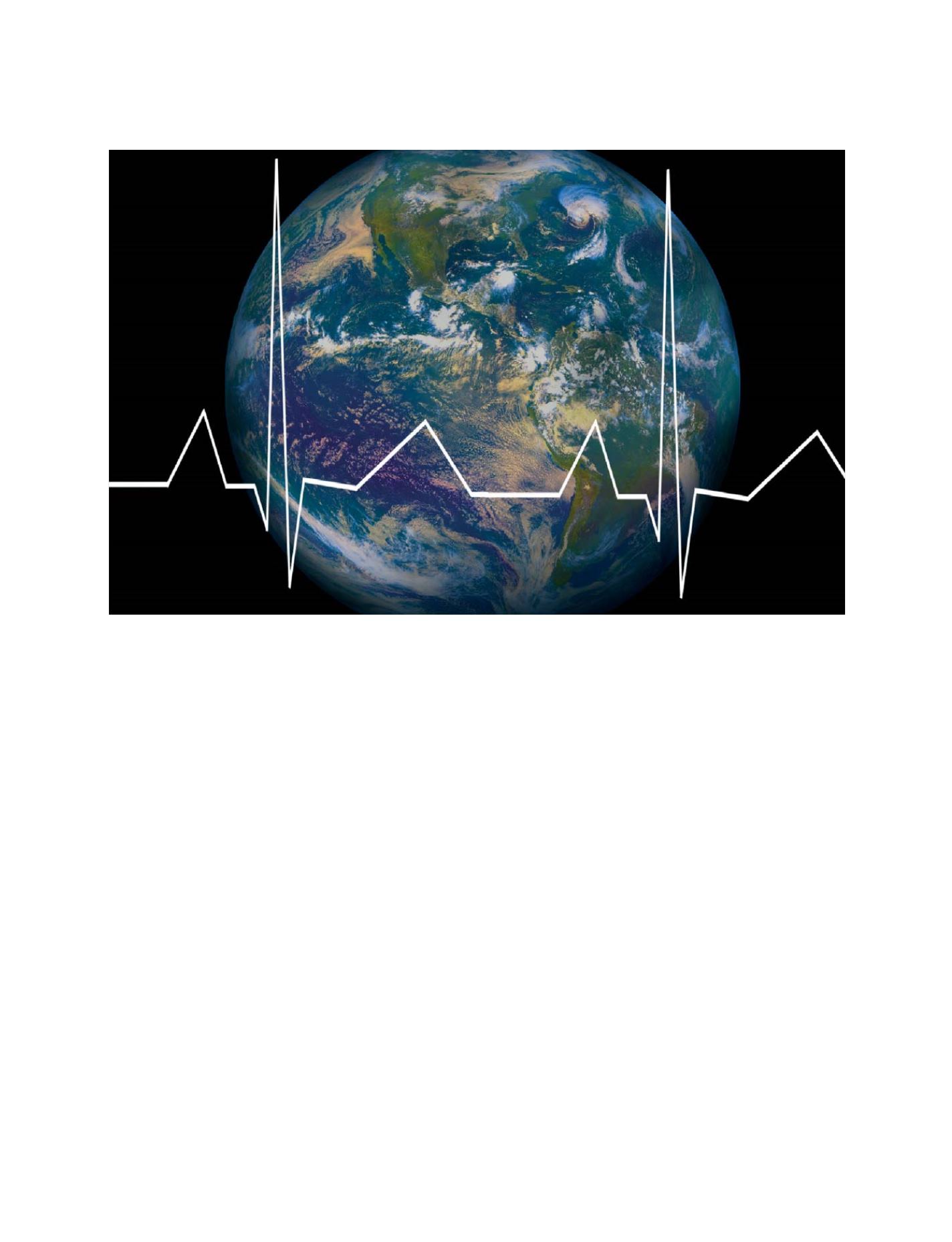

[
] 111
toes,” says Terry Newby, program manager at the
Agricultural Research Council, Republic of South Africa.
GEONETCast also allows decision makers to operate on
a larger scale. “We will now be able to get a global picture
of data sets, which can really be useful in how we manage
our biological diversity. It will begin, in my view, to prob-
ably resolve some of the big debates that we have at the
global level,” says Philemon Mjwara, director-general of
the Department of Science and Technology, Republic of
South Africa.
The pulse of the planet
Every body needs a nerve system to sense its condition and
to communicate messages to its decision-making centre so
it can make adjustments, take remedial measures and plan
for survival. The Earth itself is no exception to this neces-
sity. Fortunately, it now has GEOSS with its many
component sensor and processing systems. The Earth now
also has GEONETCast to transmit that information to deci-
sion makers around the globe.
GEONETCast is timely and in time to help us decide
about our future:
• GEONETCast provides information essential to protect-
ing lives and more effectively managing a world of
resources
• GEONETCast helps to take the pulse of the planet
• GEONETCast allows for faster decision-making and
policy responses.
able cost to both providers and users. Furthermore, it was possible
to improve access by broadcasting the information of complementary
delivery systems, and thereby extending the reach of those systems.
GEONETCast has significant potential to enhance access to a wide
range of information to users who may not previously have had access
to such resources. GEONETCast is important from a diversity of data
perspective, as it will deliver information on all nine societal benefit
areas of GEO. It is equally important from a technical disparities
perspective, since GEONETCast will be able to reach developing
country users with limited or no access to high speed Internet. The
GEO capacity building strategy identifies GEONETCast as a significant
technology to enable sustainable infrastructure.
GEONETCast’s impact
“It is all about public health, quality of life, knowing what the state of
the environment is, knowing what the state of the land surface is, what
the state of the seas is. Being able to ‘take the pulse of the planet’” says
Michael Williams, control centre head at EUMETSAT.
GEOSS systems track hurricanes from their earliest formation, display
temperature trends in the oceans and scan entire continents for vegeta-
tion density. They predict where livestock will go hungry, which areas
will be hit with erosion, and which regions will suffer an outbreak of
disease. GEONETCast’s import and impact is that it delivers this infor-
mation to policy-makers in near real-time to help themmake informed
decisions.
Decisionmakers can focus on specifics by operating on localized scale:
“One thinks of things like malaria and the pools of standing water and
the moist conditions which are conducive to the breeding of mosqui-
GEONETCast transmits information to decision makers around the globe so that we may decide about our future
GEOSS C
OMPONENTS
– D
ISSEMINATION
/I
NFORMATION
S
YSTEMS
















